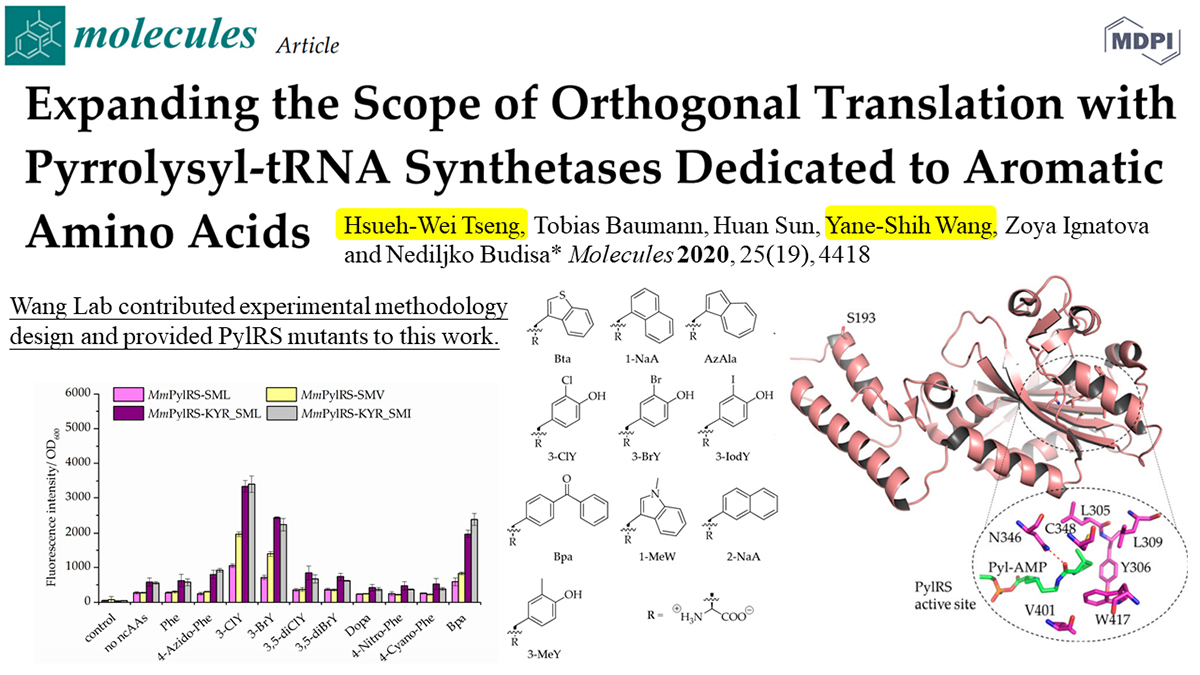
 中央研究院 生物化學研究所
中央研究院 生物化學研究所
In protein engineering and synthetic biology, Methanosarcina mazei pyrrolysyl-tRNA synthetase (MmPylRS), with its cognate tRNAPyl, is one of the most popular tools for site-specific incorporation of non-canonical amino acids (ncAAs). Numerous orthogonal pairs based on engineered MmPylRS variants have been developed during the last decade, enabling a substantial genetic code expansion, mainly with aliphatic pyrrolysine analogs. However, comparatively less progress has been made to expand the substrate range of MmPylRS towards aromatic amino acid residues. Therefore, we set to further expand the substrate scope of orthogonal translation by a semi-rational approach; redesigning the MmPylRS efficiency. Based on the randomization of residues from the binding pocket and tRNA binding domain, we identify three positions (V401, W417 and S193) crucial for ncAA specificity and enzyme activity. Their systematic mutagenesis enabled us to generate MmPylRS variants dedicated to tryptophan (such as β-(1-Azulenyl)-l-alanine or 1-methyl-l-tryptophan) and tyrosine (mainly halogenated) analogs. Moreover, our strategy also significantly improves the orthogonal translation efficiency with the previously activated analog 3-benzothienyl-l-alanine. Our study revealed the engineering of both first shell and distant residues to modify substrate specificity as an important strategy to further expand our ability to discover and recruit new ncAAs for orthogonal translation.
